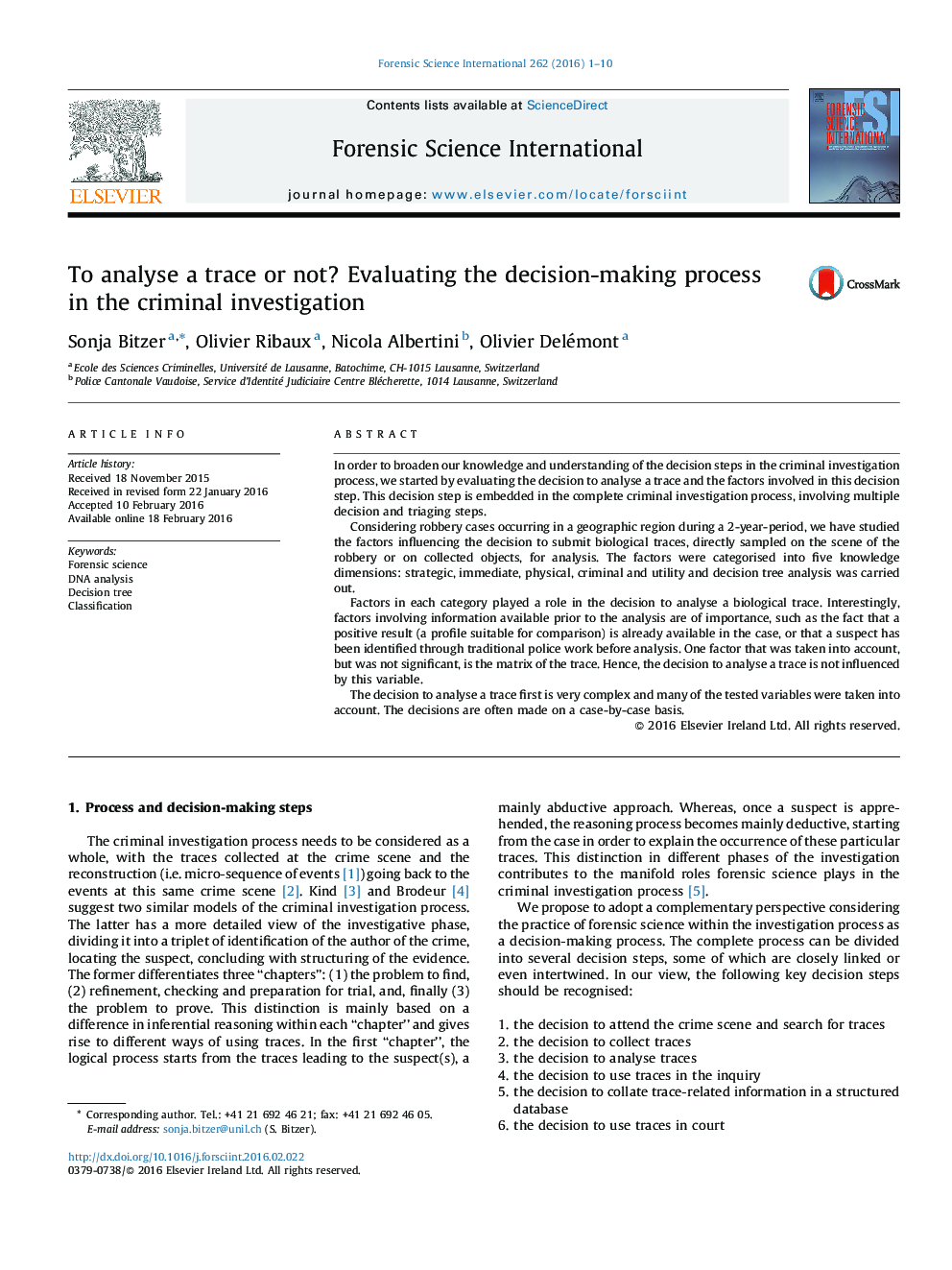| Article ID | Journal | Published Year | Pages | File Type |
|---|---|---|---|---|
| 95087 | Forensic Science International | 2016 | 10 Pages |
•Framework development for the decision to analyse a trace.•Strategic, immediate, physical, criminal and utility dimensions considered.•Decision to analyse a trace first in the investigation is very complex.•Guidelines are not followed, decisions made on a case-by-case basis.•Utility of the clue, as value-adding information, is considered in the decision.
In order to broaden our knowledge and understanding of the decision steps in the criminal investigation process, we started by evaluating the decision to analyse a trace and the factors involved in this decision step. This decision step is embedded in the complete criminal investigation process, involving multiple decision and triaging steps.Considering robbery cases occurring in a geographic region during a 2-year-period, we have studied the factors influencing the decision to submit biological traces, directly sampled on the scene of the robbery or on collected objects, for analysis. The factors were categorised into five knowledge dimensions: strategic, immediate, physical, criminal and utility and decision tree analysis was carried out.Factors in each category played a role in the decision to analyse a biological trace. Interestingly, factors involving information available prior to the analysis are of importance, such as the fact that a positive result (a profile suitable for comparison) is already available in the case, or that a suspect has been identified through traditional police work before analysis. One factor that was taken into account, but was not significant, is the matrix of the trace. Hence, the decision to analyse a trace is not influenced by this variable.The decision to analyse a trace first is very complex and many of the tested variables were taken into account. The decisions are often made on a case-by-case basis.
